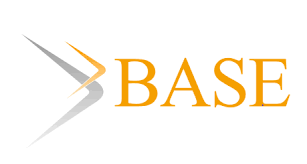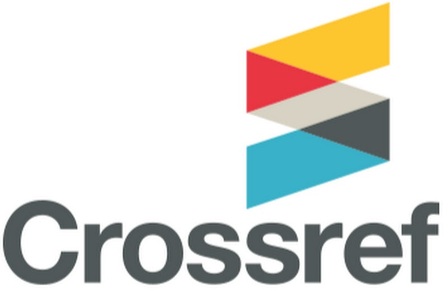FACTORS OF COFFEE SHOP REVISIT INTENTION AND WORD-OF-MOUTH MEDIATED BY CUSTOMER SATISFACTION
(1) Faculty of Business, Sampoerna University, Jakarta
(2) Faculty of Business, Sampoerna University, Jakarta
(3) Bina Nusantara University
(*) Corresponding Author
Abstract
Keywords
Full Text:
PDFReferences
Agriculture and Agri-Food Canada (2014) Market Access Secretariat: global analysis report: Food service profile: Indonesia. Retrieved 14 February 2018, from http://www.agr.gc.ca/resources/prod/Internet-Internet/MISB-DGSIM/ATS-SEA/PDF/6769-eng.pdf
Anwar, S., & Gulzar, A. (2011). Impact of Perceived Value on Word of Mouth Endorsement and Customer Satisfaction: Mediating Role of Repurchase Intentions. International Journal of Economics and Management Sciences, 11(5), 46-54.
Arora, R., & Singer, J. (2006). Customer Satisfaction and Value as Drivers of Business Success for Fine Dining Restaurants. Services Marketing Quarterly, 28(1), 89-102.
Bharadwaj, S., Fahy, J., & Varadarajan, P. (2014). Sustainable Competitive Advantage in Service Industries: a Conceptual Model and Research Propositions. Proceedings of The 1992 Academy of Marketing Science (AMS) Annual Conference, 441-443.
Brady, M., & Cronin, J. (2001). Some New Thoughts on Conceptualizing Perceived Service Quality: A Hierarchical Approach. Journal of Marketing, 65(3), 34-49.
Brown, T., Barry, T., Dacin, P., & Gunst, R. (2005). Spreading the Word: Investigating Antecedents of Consumers' Positive Word-of-Mouth Intentions and Behaviors in a Retailing Context. Journal of The Academy Of Marketing Science, 33(2), 123-138.
Chow, K., Ong, D., Tham, W., & Wong, Y. (2013). Factors influencing dining experience on customer satisfaction and revisit intention among undergraduates towards fast food restaurants. Retrieved from http://eprints.utar.edu.my/id/eprint/1064
Chow, I., Lau, V., Lo, T., Sha, Z., & Yun, H. (2007). Service quality in restaurant operations in China: Decision- and experiential-oriented perspectives. International Journal of Hospitality Management, 26(3), 698-710.
Cibro, Y., & Hudrasyah, H. (2017). Factors that Influence Customer’s Intentions to Revisit Cafe: Case Study of Siete Café in Bandung. Journal of Business and Management, 6(2), 284-300.
Creswell, J. (2013). Research Design: Qualitative, Quantitative, and Mixed Methods Approaches (1st Ed.). SAGE Publications.
Delgadillo, Y., & Escalas, J. (2014). Narrative Word-Of-Mouth Communication: Exploring Memory and Attitude Effects of Consumer Storytelling. Advances in Consumer Research, 31, 186-192.
DeVellis, R. (2011). Scale Development: Theory and Applications (Applied Social Research Methods). 3rd Ed. Thousand Oaks, Calif.: Sage Publications, Inc.
Forgas-Coll, S., Palau-Saumell, R., Sánchez-García, J., & Callarisa-Fiol, L. (2012). Urban destination loyalty drivers and cross-national moderator effects: The case of Barcelona. Tourism Management, 33(6), 1309-1320.
Ganea, S. (2012). 12 Coffee shop interior designs from around the world. Retrieved from https://www.homedit.com/12-coffee-shop-interior-designs-from-around-the-world/
Goyal, A., & Singh, N. (2007). Consumer perception about fast food in India: an exploratory study. British Food Journal, 109(2), 182-195.
Hartline, M., & Jones, K. (1996). Employee performance cues in a hotel service environment: Influence on perceived service quality, value, and word-of-mouth intentions. Journal of Business Research, 35(3), 207-215.
Hennig-, T., Malthouse, E. C., Friege, C., Gensler, S., Lobschat, L., Rangaswamy, A., & Skiera, B. (2010). The impact of new media on customer relationships. Journal of Service Research, 13(3), 311-330.
International Coffee Organization (ICO) (2017). Domestic Consumption by all exporting countries. London: International Coffee Organization. Retrieved 21 December 2017, from http://www.ico.org/historical/1990%20onwards/PDF/1b-domestic-consumption.pdf
Jani, D., & Han, H. (2011). Investigating the key factors affecting behavioral intentions. International Journal of Contemporary Hospitality Management, 23(7), 1000-1018.
Kahn, B. (1995). Consumer variety-seeking among goods and services. Journal of Retailing and Consumer Services, 2(3), 139-148.
Kang, J., Tang, L., & Bosselman, R. (2011). Changes of Coffee Consumption Behaviors in Korea: The Effects of Image Congruity Toward Brand Name Coffee Shops on Customer Attitude and Repurchase Intention. In Proceedings of the 16th Annual Graduate Education & Graduate Student Research Conference in Hospitality & Tourism (1-14). Houston, TX. Retrieved from http://htp://lib.dr.iastate.edu/aeshm_conf/95
Karman, A. (2016). 'Bone Breaking' at Ottoman’s Coffee Brewers - WANDERBITES! Food Photographer & Food Blogger. WANDERBITES! Food Photographer & Food Blogger. Retrieved 21 November 2017, from https://www.wanderbites.com/jakarta-coffee-shop-2/bone-breaking-ottomans-coffee-brewers/
Kim, W., Ng, C. & Kim, Y. (2009). Influence of institutional DINESERV on customer satisfaction, return intention, and word-of-mouth. International Journal of Hospitality Management, 28(1), 10-17.
Kotler, P. (1973). Atmospherics as a marketing tool. Journal of Retailing, 49(4), 48-64.
Kotler, P., Bowen, J., & Makens, J. (2013). Marketing for Hospitality and Tourism. Pearson Education, Inc. Upper Saddle River, NJ.
Kotler, P., & Keller, K. (2008). Marketing Management (13th Ed.). Upper Saddle River, N.J.: Pearson Prentice Hall.
Kwun, D., Ellyn, E., & Choi, Y. (2013). Campus Foodservice Attributes and their Effects on Customer Satisfaction, Image, and Word-of-Mouth. Journal of Foodservice Business Research, 16(3), 276-297.
Labensky, S., Ingram, G., & Labensky, S. (2001). Webster’s new world dictionary of culinary arts (2nd Ed.). Upper Saddle River, NJ: Prentice Hall.
Lewis, R. (1981). Restaurant advertising, appeals and consumers’ intentions. Journal of Advertising Research, 21(5), 69-74.
McDaniel, C., & Gates, R. (2010). Marketing Research (8th ed., p. 414). Hoboken, N.J: John Wiley.
Namkung, Y., & Jang, S. (2007). Does Food Quality Really Matter in Restaurants? Its Impact on Customer Satisfaction and Behavioral Intentions. Journal of Hospitality & Tourism Research, 31(3), 387-409.
Negrete, R. (2014). Generational Flavors - Flavor & the Menu. Retrieved from https://www.getflavor.com/generational-flavors/
Oliver, R. (1997). Satisfaction: a Behavioral Perspective on the Consumer. Boston, Mass.: Irwin/McGraw-Hill.
Parasuraman, A., Zeithaml, V., & Berry, L. (1988). SERVQUAL: A multiple-item scale for measuring consumer perceptions of service quality. Journal of Retailing, 64(1), 12-40.
Pattarakitham, A. (2015). The Influence of Customer Interaction, Variety, and Convenience on Customer Satisfaction and Revisit Intention: A Study of Shopping Mall in Bangkok. Journal of Economics, Business and Management, 3(11), 1072-1075.
Perez, M. (2016). Coffee-Loving Millennials Push Demand to a Record. Bloomberg.com. Retrieved 21 November 2017, from https://www.bloomberg.com/news/articles/2016-10-30/millennial-hunt-for-caffeine-fix-propels-coffee-demand-to-record
Pettijohn, L., Pettijohn, C., & Luke, R. (1997). An Evaluation of Fast Food Restaurant Satisfaction. Journal of Restaurant & Foodservice Marketing, 2(3), 3-20.
Ryu, K., & Jang, S. (2008). DINESCAPE: A Scale for Customers’ Perception of Dining Environments. Journal of Foodservice Business Research, 11(1), 2-22.
Sallam, M. (2016). An Investigation of Corporate Image Effect on WOM: The Role of Customer Satisfaction and Trust. International Journal of Business Administration, 7(3), 27-35.
Startt, C. (2017). 3 ways to engage millennials and Gen Z. Retrieved 21 December 2017, Retrieved from https://www.fastcasual.com/blogs/3-ways-to-engage-millennials-and-gen-z/
Stine, R., & Foster, D. (2011). Quantitative Method for Business. Statistic for Business Intention and Analysis. Pearson.
Sulek, J., & Hensley, R. (2004). The Relative Importance of Food, Atmosphere, and Fairness of Wait. Cornell Hotel and Restaurant Administration Quarterly, 45(3), 235-247.
Ting, H., & Thurasamy, R. (2016). What matters to infrequent customers: a pragmatic approach to understanding perceived value and intention to revisit trendy coffee café. Springerplus, 5(1), 1-11.
Turhan, G. (2014). Building Store Satisfaction Centred on Customer Retention in Clothing Retailing: Store Design and Ease of Shopping. International Journal of Research in Business and Social Science, 3(1), 89-105.
Turhan, G., & Özbek, A. (2013). Factors Affecting Consumers’ Behavioural Intention Towards Apparel Stores: A Test of the Mediating Role of Brand Satisfaction. Fibres & Textiles in Eastern Europe, 1(97), 7-13.
USDA Foreign Agricultural Services. (2017). Indonesia Coffee Annual Report 2017. Global Agricultural Information Network. Retrieved 21 December 2017, Retrieved from https://gain.fas.usda.gov/Recent%20GAIN%20Publications/Coffee%20Annual_Jakarta_Indonesia_5-15-2017.pdf
Weiss, R., Feinstein, A., & Dalbor, M. (2004). Customer Satisfaction of Theme Restaurant Attributes and Their Influence on Return Intent. Journal of Foodservice Business Research, 7(1), 23-41.
Wong, C., & Kwong, W. (2004). Outbound tourists’ selection criteria for choosing all-inclusive package tours. Tourism Management, 25(5), 581-592.
Yusof, N., Ibrahim, A., Muhammad, R., & Ismail, T. (2016). Determinants of UiTM Students’ Revisit Intention to Kopitiam in Penang. Procedia - Social and Behavioral Sciences, 222, 315-323.
DOI: https://doi.org/10.24123/jmb.v19i1.418
Article Metrics
Abstract view : 9371 timesPDF - 2512 times
Refbacks
- There are currently no refbacks.
Copyright (c) 2019 Journal of Management and Business

This work is licensed under a Creative Commons Attribution 4.0 International License.
This work is licensed under a Creative Commons Attribution 4.0 International License. ISSN: 1412-3789. e-ISSN: 2477-1783.
 |  |  |  |
 |  |  |  |







